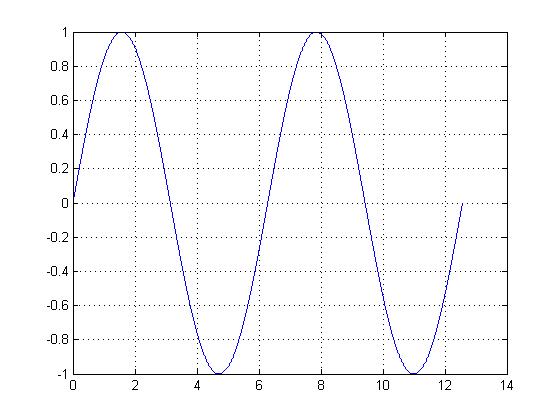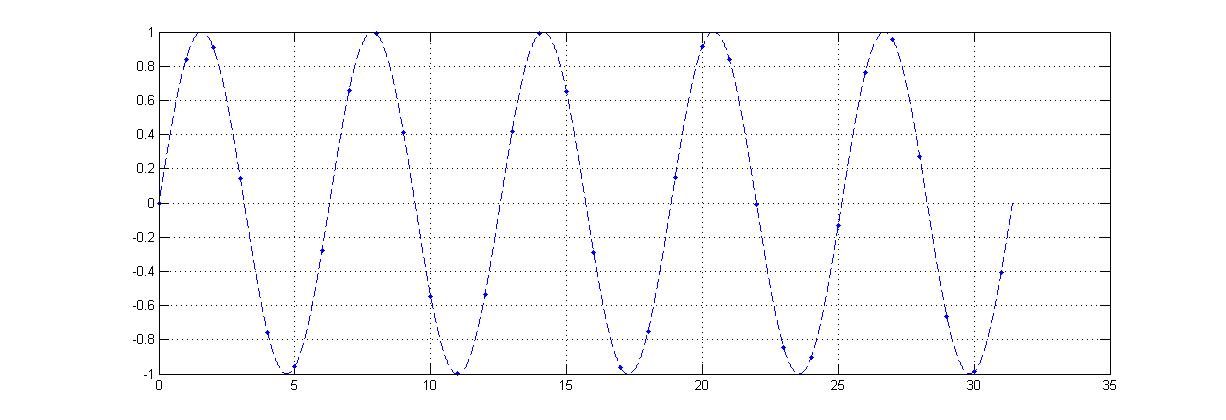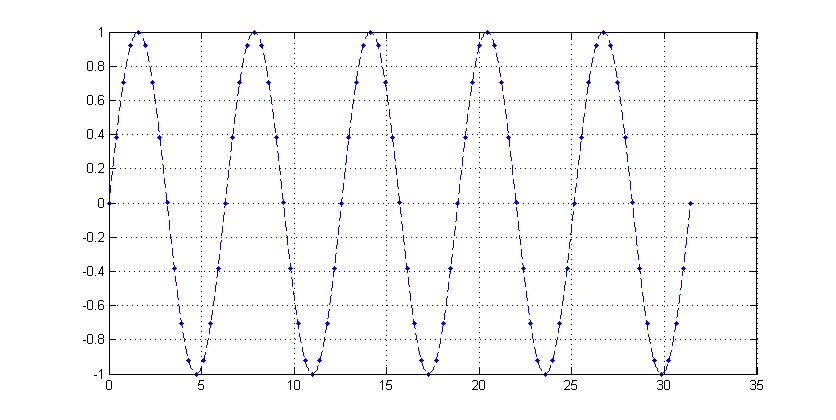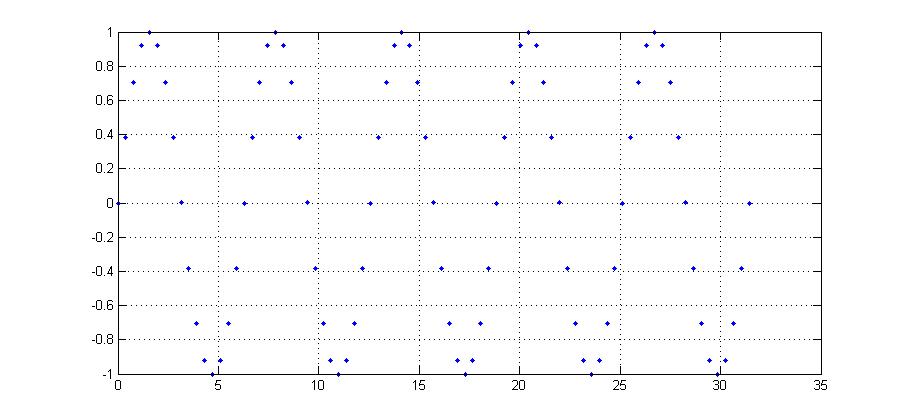| Line 16: | Line 16: | ||
For the signal to be periodic, there must exist an integer N such that <math>x[n]=x[n+N]</math>. For the signal defined as it is here, no such integer N exists. | For the signal to be periodic, there must exist an integer N such that <math>x[n]=x[n+N]</math>. For the signal defined as it is here, no such integer N exists. | ||
| + | |||
'''Changing a Periodic Continuous Time Signal to a Periodic Discrete Time Signal''' | '''Changing a Periodic Continuous Time Signal to a Periodic Discrete Time Signal''' | ||
| − | Suppose our sampling frequency, instead of being 1, was <math>\frac{\pi}{8}</math>. | + | Suppose our sampling frequency, instead of being 1, was <math>\frac{\pi}{8}</math>. Then the newly sampled function overlaid with the continuous function would look something like |
| + | |||
| + | [[Image:hw2a1d_blaskows_ECE301Fall2008mboutin.jpg|frame|center|300px|The periodic discrete-time function <math>x[n]=sin(\frac{\pi}{8}n)</math> overlaid with its continuous time equivalent.]] | ||
| + | |||
| + | [[Image:hw2a1e_blaskows_ECE301Fall2008mboutin.jpg|frame|center|300px|The periodic discrete-time function <math>x[n]=sin(\frac{\pi}{8}n)</math>.]] | ||
| + | |||
| + | |||
==Part 2== | ==Part 2== | ||
To be completed... | To be completed... | ||
Revision as of 07:06, 10 September 2008
Part 1
Changing a Periodic Continuous Time Signal to a Non-Periodic Discrete Time Signal
One can take a signal that would be periodic in continuous time and turn it into a signal that is not periodic in discrete time. Consider the continuous time signal $ x(t)=sin(t) $. Plotting this signal yields a smooth waveform that repeats itself with period $ T=2\pi $.
Sampling this signal at every integer time yields something altogether different.
The new discrete time function looks like this on its own.
For the signal to be periodic, there must exist an integer N such that $ x[n]=x[n+N] $. For the signal defined as it is here, no such integer N exists.
Changing a Periodic Continuous Time Signal to a Periodic Discrete Time Signal
Suppose our sampling frequency, instead of being 1, was $ \frac{\pi}{8} $. Then the newly sampled function overlaid with the continuous function would look something like
Part 2
To be completed...






